Resources from past events organised by the Engineering Group can be found below. If there is an event you would like details for, or questions about any past meeting resources that we can make available, please email the group.
2016 2015 2014 2013 2012 2011 2010 2009 2007
2016
Buried Hollows in the London Basin & Surrounds: Establishing the Ground Model, Ground Risk Management & Engineering Mitigation
01 September 2016
The Engineering Group hosted a one day meeting themed on Buried Hollows in the London Basin and surrounding areas. The presentations addressed the possible modes of origin, the challenges they present in ground investigation and their risk mitigation through ground engineering solutions, all illustrated with case studies.
Presentations included:
-
BGS contributions to the mapping and modelling of buried hollows in London. Vanessa Banks, Don Aldiss, Stephanie Bricker, Claire Dashwood, Richard Ellison, David Entwisle, Richard Haslam, Jonathan Lee, Kate Royse (British Geological Survey)
-
The Boundary Lane Pingo - A newly discovered and investigated example of a large London Basin Quaternary Pingo. Jackie Skipper (Geotechnical Consulting Group), Matthew Bellhouse (Tideway East), & John Clark-Hughes (CH2M)
-
Tectonic controls on the origin of buried hollows. Phillipa Mason & Richard Ghail (Imperial College)
-
Geological control of drift filled hollows: a case study at St. James's Square, London. Stephen Dixon, Richard Ghail (Imperial College) & Richard Ball (CGL)
-
Sedimentology and modes of formation of drift filled hollows. Jackie Skipper (Geotechnical Consulting Group)
-
Drift-filled hollows in Battersea: investigation of the structure and geology along the route of the Northern Line Extension, London. Emma Toms, Richard Ghail & Philippa Mason (Imperial College)
-
Drift filled hollows encountered during the design and construction of Thames Water’s Ring Main Tunnel. Tim Newman (Tideway)
-
Evolution of ground risk management and engineering mitigation measures for tunnelling through the wall of a drift filled hollow in the City of London. John Davis (Crossrail/ Geotechnical Consulting Group) & Roser Soler Pujol (BBMV – Balfour Beatty, Bemo Tunnelling, Morgan Sindall and Vinci JV)
-
Drift Filled Hollows of the Kennet Valley: potential processes, form and implications for risk assessment. Philip Collins (Brunel University), Vanessa Banks (British Geological Survey) & Peter Reading (Brunel University)
BGS contributions to the mapping and modelling of buried hollows in London
Drift Filled Hollows of the Kennet Valley potential processes form and implications for risk assessment
Drift-filled hollows in Battersea investigation of the structure and geology along the route of the Northern Line Ext
Evolution of ground risk management and engineering mitigation measures for tunnelling through the wall of a drift fi
Geological control of drift filled hollows a case study at St James
Tectonic controls on the origin of buried hollows
Groundwater Control in Urban Areas
16 February 2016, Burlington House, London
Underground infrastructure developments in urban areas often require control of groundwater in increasingly restricted locations resulting in innovative solutions. The three speakers explore this theme using recent dewatering projects in the London Basin.
Martin Preene begins by summarising the issues involved and the potential impacts arising from the interaction of dewatering and urban environments.
Toby Roberts will focus on dewatering and depressurisation strategies used to target the Lambeth Group channel sands for tunnel works in London.
Emilio Linde-Arias describes a recent project from the east end of London. In order to construct two shafts, one permanent and one temporary, dewatering of the Lambeth Group and the Deep Aquifer was required both from the surface and from within the shafts.
2015
Further developments with Embankment Dams on the Mercia Mudstone
Wednesday 4 March 2015, The Geological Society, Burlington House, London
This presentation deals with the geotechnical aspects of reservoir design and construction using Mercia Mudstone, drawn from original desk study work and construction experience from the Lincolnshire reservoir, and from the more recent investigations and other studies relating to the new Cheddar Reservoir.
Presentation slides - Tim Blower (Technical Director, Mott MacDonald)
Presentation slides - Saeed Mojabi (Director, Arup)
Geological, geotechnical and hydrogeological aspects of the York Potash Ltd mineral transport system
Wednesday 21 January 2015, The Geological Society, Burlington House, London
York Potash Limited (YPL) intend to build the first potash mine in the UK for over 40 years – a plan for North Yorkshire that has both local and national significance. A state-of-the-art new mine to extract polyhalite, a unique multi-nutrient form of potash, will not only safeguard UK supplies, but also boost the local, regional and UK national economies.
The talk describes the proposed mine and ground investigations carried out to date and discusses the various geological, geotechnical and hydrogeological aspects of the tunnel investigations.
Speakers: Tristan Pottas (YPL) & Tom Berry (Arup)
2014
International Perspectives on the Integration of Geotechnical Risk Management and Project Risk Management
Thursday 27 March 2014, The Geological Society, Burlington House, London
The 2013 International State of the Art report on the Integration of Geotechnical Risk management and Project Risk management brings together views from 10 countries in Europe and the far east including, in alphabetical order, Austria, China, Czech Republic, Finland, Germany, Japan, Netherlands, Sweden, Switzerland and United Kingdom.
As author of the contributing UK Country Report, Paul Maliphant presented key findings of both International and UK perspectives and led a discussion on actions that sector leaders, industry bodies and others could and should take to enhance the value of ground engineering to construction.
Presentation - P Maliphant
Report - Part 1
Report - Part 2
Engineering the Lee Tunnel and Shafts through Chalk at Depth
Wednesday 29 January 2014, The Geological Society, Burlington House, London
A joint evening meeting between the Engineering Group of the Geological Society and the British Tunneling Society.
Currently under construction, the Thames Water Lee Tunnel will be the first section of
the Thames Tideway Tunnels programme which will clean up the River Thames by
capturing the combined storm water and sewage flows which
presently discharge to it.
The 6.9 km long, 7.2m finished diameter, Lee Tunnel is the deepest tunnel ever to be
built in London and the project includes five shafts which are London's largest and
deepest ever. These requirements have presented exceptional
engineering challenges
to designers and constructors alike. The speakers will focus on the geotechnical and
hydrogeological conditions with particular emphasis on the Chalk, and explain how
these conditions have influenced the engineering to produce some h
ighly innovative
solutions.
Presentation by Peter Jewell (CH2M HILL - Project Management Team) and Matthew Bellhouse (Bachy Soletanche - MVB JV)
EGGS January 2014 Presentation*
*Please download the PDF to view the presentation at full resolution.
2013
The Engineering Geology of Scour Features (22 January 2013)
Scour features are encountered all through London’s flood plains, unexpectedly producing substantial thicknesses of gravel. Debate has centred on their formation from fault controlled scour features to relict pingos. Speakers discussed the origin and the construction issues posed by of these features, including impacts on tunnelling and deep foundations.
2012
Field Meeting: French Channel Coast (29 June - 1 July 2012)
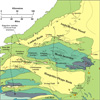 The French Channel coast sections offer a unique chance to investigate stratigraphy, sedimentology, structure, karst development weathering, including Sarsen formation, in relation to engineering geology and hydrogeology. This field meeting, led by Professor Rory Mortimore, was carried out on the French coastal cliffs at Dieppe and to the west (day 1) and then at Antifer, Le Tilleul and Etretat (day 2) and north of Dieppe at St Martin Plage, Criel and Le Tréport (day 3).
The French Channel coast sections offer a unique chance to investigate stratigraphy, sedimentology, structure, karst development weathering, including Sarsen formation, in relation to engineering geology and hydrogeology. This field meeting, led by Professor Rory Mortimore, was carried out on the French coastal cliffs at Dieppe and to the west (day 1) and then at Antifer, Le Tilleul and Etretat (day 2) and north of Dieppe at St Martin Plage, Criel and Le Tréport (day 3).
Engineering Geology of Dams (20 June 2012)
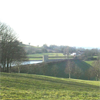 A seminar on the engineering geology of dams. The presentation from Tim Blower (Mott MacDonald) is available to download below.
A seminar on the engineering geology of dams. The presentation from Tim Blower (Mott MacDonald) is available to download below.
Managing Risk – The Views of the Built Environment Professional (20 February 2012)
An opportunity to listen to experts from the built environment professional community on their views of risk. This was stimulated by the emerging issues of the low carbon economy, investment in infrastructure, building information modelling, reduction in construction costs, energy investment and whole life value.
2011
Engineering Group Forum and Glossop Lecture 2011 (23 November 2011)
This 4th Engineering Group Forum brought together key experts in the field of Quaternary Science, Quaternary Geology and Quaternary Engineering Geology to present on various aspects of the contemporary and relict Quaternary environments. The 12th Glossop Lecture was delivered by Professor Edward Bromhead (Kingston University London) on ‘Reflections on the residual strength of clays with special reference to bedding-controlled landslides.’ The lecture was preceded by the Glossop Award presentation by Sophie Gibb (Key GeoSolutions Ltd) on ‘Application of pre-split blasting to final faces in hard rock quarries’.
2010
Soil-geosynthetic Interaction: Obtaining Strength Parameters for Design (14 December 2010)
 Professor Neil Dixon (Loughborough University) discussed factors influencing the design, testing and performance of geosynthetics. He described the reason for observed large variability of measured interface strengths between laboratories and provided recommendations for characteristic interface strength parameters using an example from landfill design.
Professor Neil Dixon (Loughborough University) discussed factors influencing the design, testing and performance of geosynthetics. He described the reason for observed large variability of measured interface strengths between laboratories and provided recommendations for characteristic interface strength parameters using an example from landfill design.
Engineering Geology in the Middle East (7 September 2010)
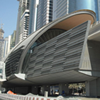 Paul Nowak (Atkins) presented the ground conditions along the route corridor of the Red and Green Lines of the Dubai Metro, the ground investigation, design of viaduct foundations and the underground station box at Union Square.
Paul Nowak (Atkins) presented the ground conditions along the route corridor of the Red and Green Lines of the Dubai Metro, the ground investigation, design of viaduct foundations and the underground station box at Union Square.
2009
Basally Reinforced Platforms For Piled Embankments: Dutch and UK Case Studies (8 December 2009)
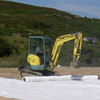 Hartmut Hangen (Huesker Synthetic) and Martin Curd (Scott Wilson) described case studies and design of basally reinforced platforms and discussed the construction processes and the international approach to pile spacing and embankment height.
Hartmut Hangen (Huesker Synthetic) and Martin Curd (Scott Wilson) described case studies and design of basally reinforced platforms and discussed the construction processes and the international approach to pile spacing and embankment height.
Soft Ground Tunnelling through London (11 November 2009)
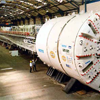 Dr Ursula Lawrence discussed the Crossrail project and how coverage of the ground and groundwater conditions lead on to the risks associated with those strata generally. The more local risks associated with tunnelling in London itself was described both from a geological perspective.
Dr Ursula Lawrence discussed the Crossrail project and how coverage of the ground and groundwater conditions lead on to the risks associated with those strata generally. The more local risks associated with tunnelling in London itself was described both from a geological perspective.
Site Investigation: Where Are We Now And What Is The Future? (15 September 2009)
Following from the significant changes to the regulatory landscape in the UK, this seminar offered the opportunity to understand the key effects on site investigation practice from the changes to both the SISG documents and the latest on the Eurocode. It also reviewed important practical aspects of changes to ground investigation activities to keep pace.
Excavation of the 34th Street Station (17 June 2009)
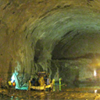 Peter Chamley (Arup) described the GI and detailed design work that has been undertaken for the design of the initial rock support at the 34th Street Station Cavern for the No.7 Line extension and the Grand Central Station Caverns for the East Side Access Project.
Peter Chamley (Arup) described the GI and detailed design work that has been undertaken for the design of the initial rock support at the 34th Street Station Cavern for the No.7 Line extension and the Grand Central Station Caverns for the East Side Access Project.
Engineering Hydrogeology: Predictions, Management, Dewatering and Legislation (14 January 2009)
Many engineering projects, ranging from building construction, to quarrying and mining, often need to take careful consideration of hydrogeology in order to facilitate the development going ahead and to predict, and potentially mitigate, any potential environmental impacts. The one-day seminar discussed topical and relevant issues that have to be considered by both hydrogeologists and engineering geologists.
2007
Geotubes (12 December 2007)
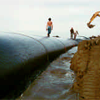 At the annual joint meeting with the International Geosynthetics Society (IGS), Edwin Zengerink gave an interesting talk on Geotubes.
At the annual joint meeting with the International Geosynthetics Society (IGS), Edwin Zengerink gave an interesting talk on Geotubes.
Save